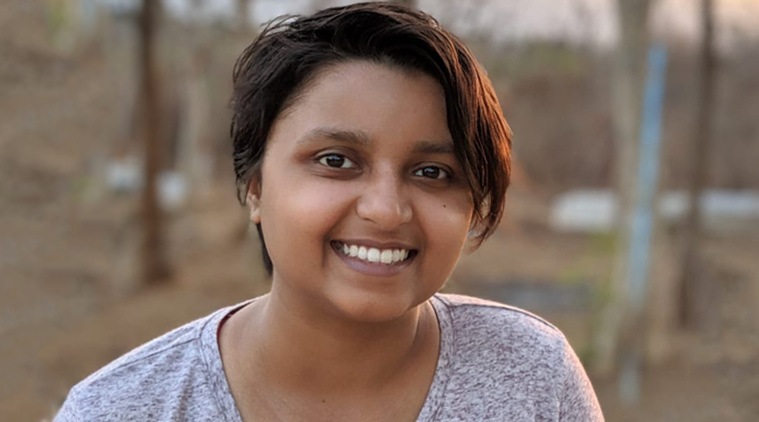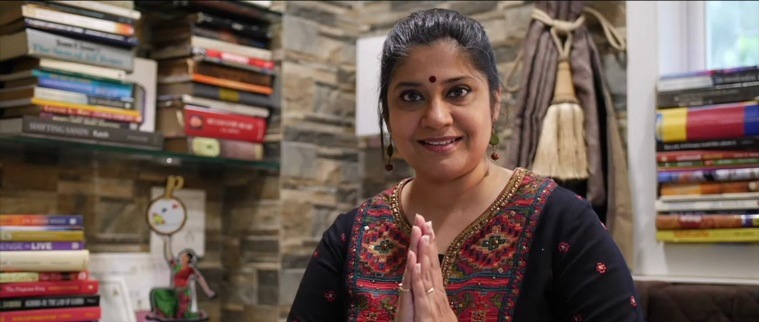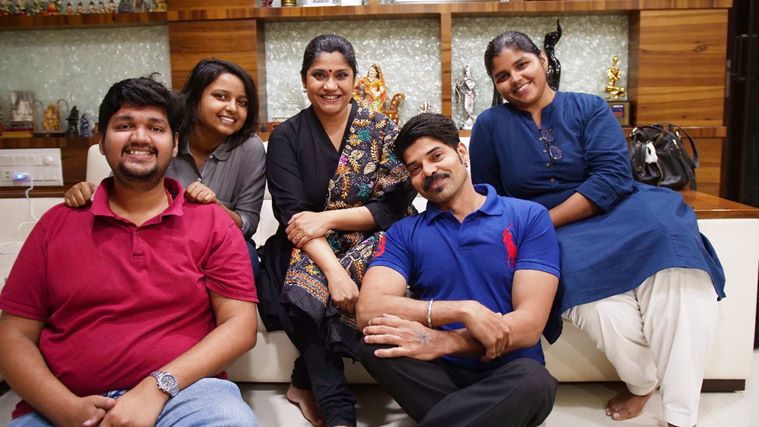
Born and raised on the outskirts of Thane, Shruti Kulkarni says she had very limited exposure to different cultures and opportunities. Intrigued by stories and storytelling, she, however, used to read a lot which provided her with the opportunity to look beyond and also gave exposure to different cultures, lives, and stories of struggles, happiness and sadness.
It was during her college years that she became interested in filmmaking and decided that no matter what career she pursues, she would keep sharing and communicating stories through her films. Recently, the 25-year-old, who works as a designer with a digital communications agency in Mumbai, won the first prize for her short film Outcast by Birth at Blued Queer Flicks, a contest for short films on issues related to the LGBTQ community.
ALSO READ: LGBT Pride Month: Majority of women respondents back legalising gay marriage, says survey
In an email interview, she tells indianexpress.com about the film, what the Pride Month means to her and what needs to be done to ensure that voices from the community are no longer ignored.
Excerpts:
What led to the conceptualisation of Outcast by Birth?
The concept is a cumulative effort of many people who believed I could create this, and contributed their suggestions. The problem we wanted to tackle was — how do we make content that will help our parents, relatives or even neighbours to actually understand or even start a positive conversation around LGBT people. The solution was to create simple, shareable content.
The concept also recognises that there are multiple aspects to the struggles of LGBT. To cover these aspects without making it complex, we divided the documentary into a three-episode series called LGBT by Birth, where each episode covers a single aspect. Outcast by Birth is the first of this series covering the social-scenario of LGBT. There are two other episodes called Deviant by Birth and Criminal by Birth covering the medical and legal aspects respectively.
How is this documentary a conversation starter?
It is essentially about the perception and state of the LGBT community in urban culture. This documentary is a conversation starter, an understanding to begin with. I identify as bisexual cis-female. In 2014, when I came out to my father, his primary emotion was fear and his first instinct was to save me and himself from the shame he thought the family will have to face. Next day he asked my mom, “but she gets her period right?” which has got absolutely nothing to do with my sexual orientation. He was scared because he had absolutely no clue what he was dealing with and that ruins the whole discussion.
The gap is real and it exists. During such times, it becomes important to widen people’s perception through the language and stories they would connect to, and a conversation they would not be scared of, like — what exactly does LGBT mean? What is the difference between sexual orientation and gender? How is it being a queer in this day and age? Why do they need to be supported and not shamed? When clouded by fear it is difficult for people to think beyond.
How difficult (or easy) was it to convince people to be a part of the film and share their stories?
Once you are out and interacting with people from the community, it isn’t that difficult to gain support for advocacy. There is solidarity in spreading awareness; we are all equally up for it. I got an opportunity to share the fundamental concept with Vivek Raj Anand and Suhail Abbasi from the Humsafar Trust and they were immediately on-board. They encouraged me to apply, and thus get funding from the MSA Media Fellowship Program. The core film crew are all either from the community or allies of the community.
Even in the case of Renuka Shahane, we pitched the concept to her and she was up for it within minutes. She was of tremendous help and fully supportive. It made a difference that she could empathise with the stories rather than just narrate it. There were people from the community who were ready to share their stories, and we also went around interviewing strangers across popular places in Mumbai. They saw that we were confident in asking our questions and genuinely interested in knowing what they thought. This made them answer freely.

Why did you choose to have a narrator and vox pop format for your documentary, instead of showcasing the lives of the people you have interviewed in detail?
Well, this isn’t exactly a documentary that one would find indulgence in. I understand that a film is an artful manipulation of sound, visuals and movements to let the audience experience the story in the best way possible. However, this documentary intends to be free of manipulations. It isn’t full of rich or dramatic stories. These are just everyday lives simply put.
The idea was to keep it simple. It also has a lot to do with my belief in realism as a filmmaker. We did not want the strangers on the street to get a lot of time to speak differently from what they think. Nor did I want to disturb or take the focus away from what these individuals were sharing by adding engaging visuals. You as a viewer are going by the words of these people and understanding them through your own perception of their speech.
What significance does the Pride Month have for you?
On a personal level, when you are advocating and spreading awareness throughout the year, a month doesn’t really make a difference. We (the community) would ideally like to speak about it any time, to whoever is ready to understand and listen. That said, I still think it’s great to have a month dedicated to the movement — where the media, the corporates and advertisers help us create awareness and encourage acceptance. It makes a difference when the influencers are talking about it.

How do you think your movie can bring about change?
It would have been wonderful to create something that would bring about change. But I feel that is too difficult a task. There is still time before we reach a stage where a film could just completely change people’s perception of LGBT in the long run. This documentary just starts the process of change. It gives you something in place of nothing. It answers questions that people have but might feel shy to ask. Maybe even questions that people should be asking but are too busy avoiding the topic altogether.
How long did it take you to make the film? Where was it shot?
Everyone in this film is a regular office-goer. We all have different professions to pay our bills. I work as a full-time visual designer. The writer, Rauank Pilani, is an engineer by profession. Bhoomika Pandhare from the research team was studying law during the making of this film. This gave us only Sundays to actually work on the film. So it took us four months worth of giving up every single Sunday to work on something that mattered to us. Due to budget and time constraints, we could only cover Mumbai this time. We have been specific to anybody who asks that the film speaks only through an urban lens and limits to LGBT. Someday, I would love to cover a wider region and have more representations like the ace community, intersex individuals and more.
What, according to you, needs to be done to ensure that voices from the community no longer go unheard.
To be heard, we need to speak more. People won’t listen, we need to be loud and out there. Acceptance and normalisation will come from more exposure and a better understanding of the community. I have been asked so many times – ‘just exist’, why do you need to draw attention or be so loud about it? We won’t disturb you, you don’t disturb us. My answer has always been the same – You go wrong the minute you say you vs us. We are the same as you but treated differently. We are actually just existing but through our voices. It isn’t the loudness that is creating a disturbance. It is your avoidance that makes you feel disturbed. Listen to us, know us better. Give us our basic rights and equality. The day you accept the community, you won’t find your fellow equal humans disturbing.